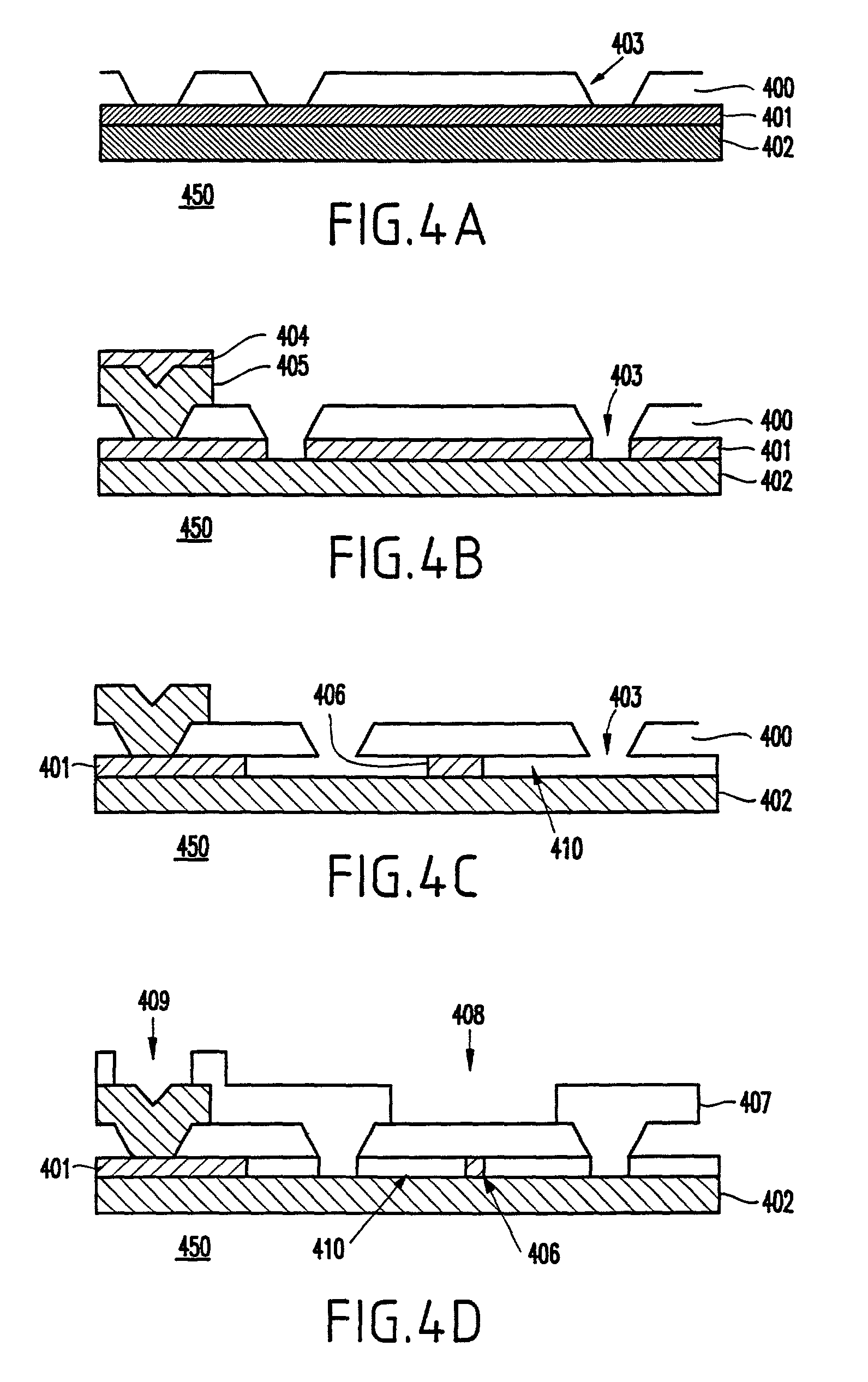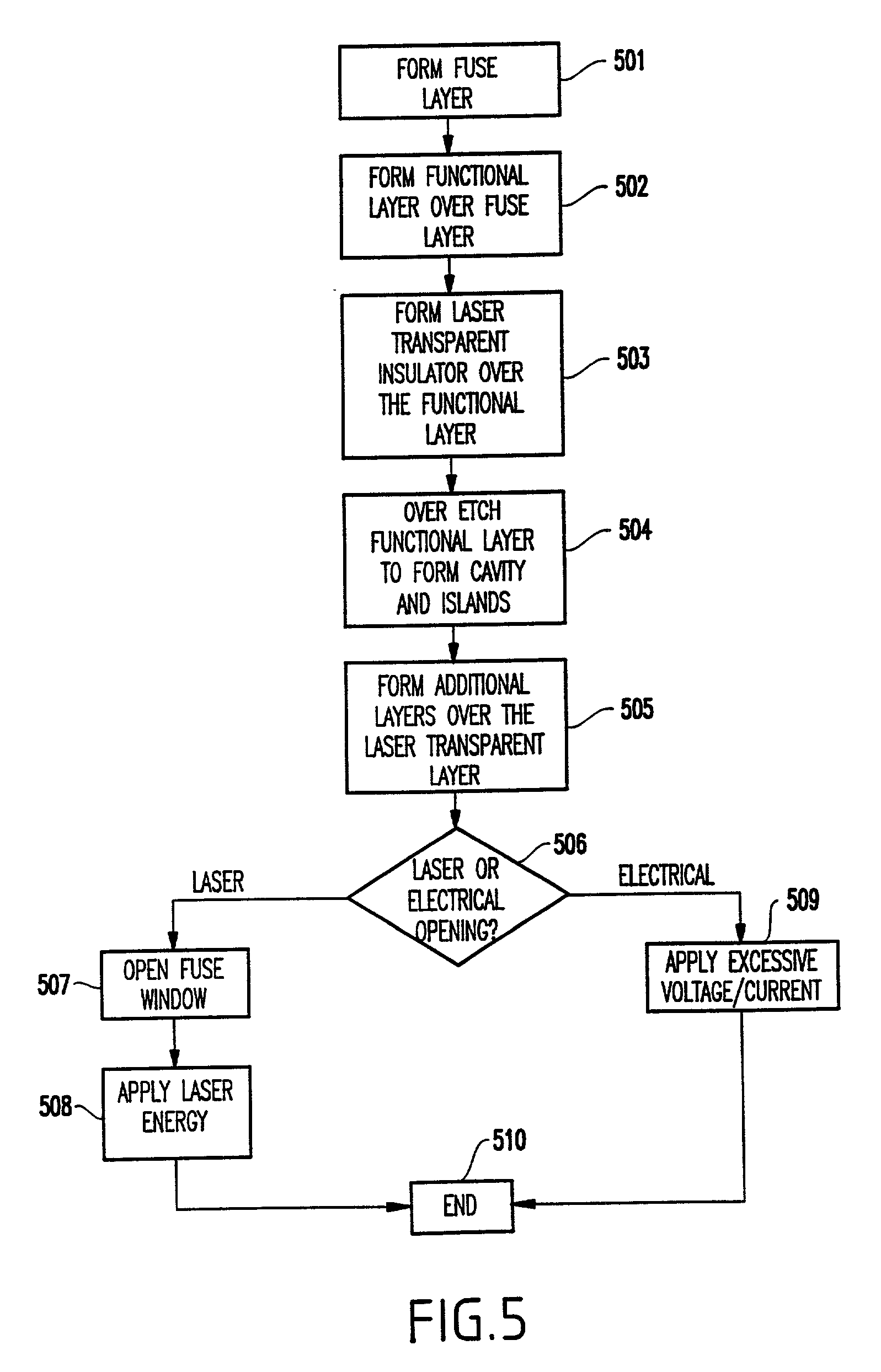Metal wire fuse structure with cavity
- Summary
- Abstract
- Description
- Claims
- Application Information
AI Technical Summary
Problems solved by technology
Method used
Image
Examples
Embodiment Construction
[0032] In order to avoid damage to surrounding structures when a fuse link blows, a cavity may be formed next to the fuse link to absorb some of the energy and the vaporized fuse material expelled during the fuse clearing process. The invention includes a uniquely and conveniently formed and uniquely located cavity which directs the energy and material from the clearing fuse away from structures which might otherwise be damaged.
[0033] More specifically, referring to FIGS. 4A-4D, a first embodiment of the inventive fuse structure / process is illustrated. FIG. 4A illustrates a cross section of a metal wire stack (e.g. a first conductive "R1" structure) formed by conventional deposition techniques, photolithography and plasma etching such as sputtering. The wire stack preferably includes a dielectric substrate 450, a first thin conductive (Ti) under layer 402 that is 5 nm-50 nm thick, a second conductive (AlCu alloy) layer 401 that is 10 nm-1000 nm thick. In this structure the AlCu allo...
PUM
 Login to View More
Login to View More Abstract
Description
Claims
Application Information
 Login to View More
Login to View More - R&D Engineer
- R&D Manager
- IP Professional
- Industry Leading Data Capabilities
- Powerful AI technology
- Patent DNA Extraction
Browse by: Latest US Patents, China's latest patents, Technical Efficacy Thesaurus, Application Domain, Technology Topic, Popular Technical Reports.
© 2024 PatSnap. All rights reserved.Legal|Privacy policy|Modern Slavery Act Transparency Statement|Sitemap|About US| Contact US: help@patsnap.com










